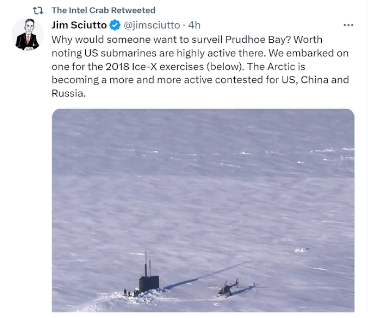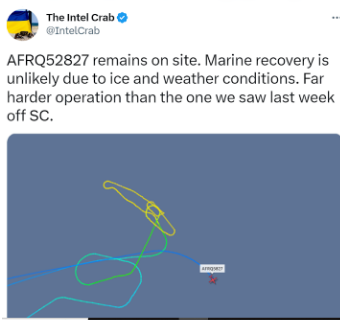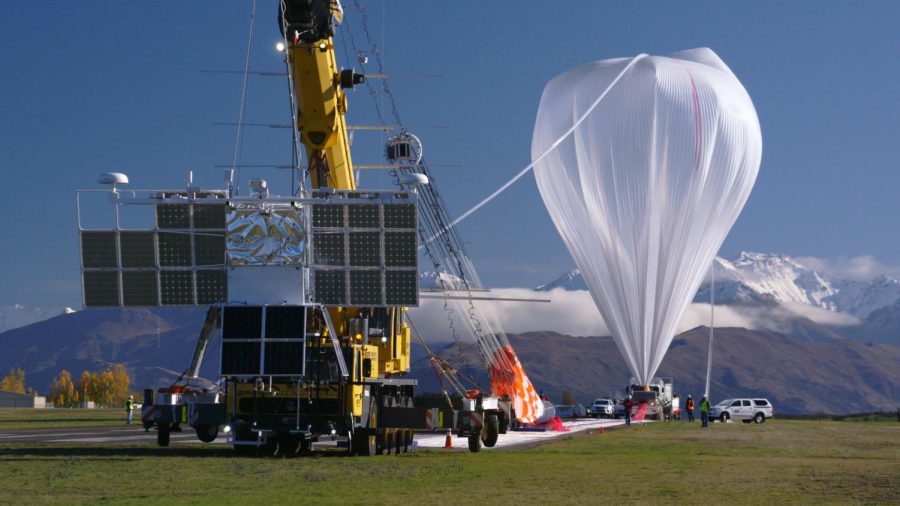Jen Ziemke: It’s all about the altitude
This week, three aerial objects, one of which is a balloon and two of which are still-to-be described, high altitude aerial objects of unknown origin violated United States airspace.
NASA successfully launched a super pressure balloon from Wanaka Airport, New Zealand.
Feb 13, 2023
This week, three aerial objects, one of which is a balloon and two of which are still-to-be described, high altitude aerial objects of unknown origin violated United States airspace. The first, a Chinese balloon roughly the size of three large city buses, made news when it hovered over Montana before meandering south and then southeast when it was subsequently shot down off the coast of South Carolina. The second object is being described as the size of a large car and was shot down off the coast of Alaska’s far north near Prudhoe Bay. To the east, another object, this time in Canadian territory, was authorized by Canadian Prime Minister Justin Trudeau to be shot down by the joint NORAD command which is responsible for protecting Canada and the U.S. from incoming aerial threats like missiles.
Each of the aerials were shot down by F-22 fighter jets who deployed a heat-seeking sidewinder missile, a creative solution to a difficult problem, finding just the right kind of kinetics using equipment designed for very different scales, altitudes and speeds. In fact, these takedowns represented both the first, second and third ever air-to-air kills for the F-22 all within the same week.
In both cases, it is likely that the payload on the device contained equipment meant to monitor, surveil and collect electronic forensic signals of all kinds. It is always possible that such a balloon could carry some kind of poison, chemical or weapons payload that could be deployed in ways we can’t imagine until after it happens; it is only after the deployment happens that such an event becomes “thinkable” – a September 11th, a January 6th, etc.
Uncertainty drives much of the concern – when NORAD first detects this activity it doesn’t immediately know the origin, purpose, payload or message it is meant to convey. Indeed, as of press time we still don’t know who controlled the object that flew over Alaska as well as the one over Canadian airspace. It could have been any state or non-state actor in the world. It is difficult to ascertain the meaning of a message under these circumstances and doubly difficult to make the right choices in a short time with almost no information.
As for the first balloon, China apologized, saying that this was a so-called “force majeure” event – a weather balloon has gone astray due to high winds! But it is difficult to believe that a balloon that navigates largely by taking advantage of the fact that wind flows in different directions at different altitudes, enabling the craft to go any which way it wants, would magically find its way over sensitive military sites in the United States and with no ability to turn back. It should also be noted that the balloon’s “hovering ability” actually has some advantages over satellites conducting much the same activity in the skies above.
On what grounds did the U.S. take action against these aerial objects? After all, if you look at any of the dozens of online trackers displaying the real-time location of satellites in orbit around the earth, you will be struck by the dense cloud of satellites surrounding our planet and how satellites from countries like China, Iran, Russia and many others are constantly in movement above our own skies. Yet, no one calls to “shoot the satellites down.” You may ask yourself, why shoot down the balloon but not the satellite whose activities are much the same?
The answer to this puzzle lies in International Law. Countries have agreed that it all depends on differences in altitude. Satellites fly higher than both of the objects under discussion here. As such, satellites operate in a very different context, one in which the 1967 Outer Space Treaty is in effect which designates space as open for all of humanity. In other words, countries of the world agreed that a satellite does not need to ask for a country’s permission to fly over it, not because of the nature of the craft, but because of its location vis-a-vis the earth. On the other hand, an aircraft must seek and receive permission from the host country below because planes fly at a lower level of altitude, typically 36,000 feet. As such, aircraft are governed by a different set of rules than satellites.
It isn’t the nature of the craft that determines the legal difference, it is the altitude. Ironically, the law currently defines the place where space begins as just above “the highest altitude that a plane can fly,” a moving target as technology constantly improves. What happens when space balloons currently under development and in the near future take tourists 100,000 feet into the air? Under which legal regime will this craft operate?
You can think of a country and what it controls as actually a three-dimensional box extending up from its land into the atmosphere and terminating at the point it becomes “space,” as well as extending outwards 12 nautical miles out from its waterline into the sea. International Law, particularly the Law of the Sea, explains where and when the U.S. decided to bring both objects down. To ensure the safety of those below, both objects were shot down just off the coast yet well within the 12 nautical mile limit set by the Law of the Sea, precisely because this is the area where states enjoy absolute sovereignty, both in the air, on the ocean and on the seafloor. [In political science, a state is the government of a country]
States push at the bounds of their sovereignty to see how much further they can extend their power (see China’s activity in the South China sea and Freedom of Navigation Operations that the U.S. conducts to counter it). In summary, we should expect interesting cases on the edge of our three-dimensional territorial box to be the primary domain where states compete, as well as unique kinds of occurrences that represent the edge of our imaginations. In this game, countries stick their toe over these lines slowly, all the while stating they didn’t do so, or if they did, they didn’t mean it.
We shouldn’t be surprised to learn that on three occasions under the Trump administration, Chinese balloons flew over U.S. airspace, but no one knew until a retrospective intelligence analysis discovered it after he left office. The Pentagon admitted this week that it suffered from a gap in its strategic awareness, but both aerials this week are helping to close this gap.

Regardless, the objects under discussion here were most definitely “low enough” to have needed to request permission before overflight of the airspace. The object over Alaska flew at 45,000 feet, well within where planes fly. Indeed, Biden is said to have authorized the mission primarily to keep commercial jet traffic safe. The Chinese weather balloon operated at 60,000 feet, yet planes like the Concord and other military aircraft can as well. On this basis, it was both within the sovereign rights of the United States to have a problem with aerials that did not request permission to enter national airspace as well as the right to take them down.
I watched live as the Chinese balloon was brought down off of Myrtle Beach, South Carolina, turning to known personalities on Twitter like @IntelCrab and others who share information, videos, live streaming and useful maps and end up breaking news of political importance before anyone else. Hobbyists who engage in Open Source Intelligence monitor sites like FlightRadar24, which tracks the plane traffic in real-time, Marine Traffic, for the ship-equivalent and scanners like Broadcastify as well as other alert systems to report suspected activity well in advance of breaking news on any of the major networks.

Indeed, it was @IntelCrab on Twitter who tipped off a potential operation in Alaska well before the kinetic take-down, writing several hours before anyone else that: “An interesting NOTAM was issued (and remains in place) for portions of northern #Alaska near Prudhoe Bay this morning. Advisory states closure is due to ‘national security aircraft operations’.”

@IntelCrab and others like him do the difficult job of curating and sifting through information on the ground by locals (in places like Ukraine) to report on credible breaking news, share video clips, share alerts and patterns and circulate the best ideas. Smart journalists know of those doing this kind of work as it helps them publish faster than they would otherwise.
You may assume that @IntelCrab is an experienced operator deep within the machine. In fact, he is a young graduate student. Through sharing his hobby and passion, he created a reputation that follows him based on a trust he built over time to share quality information fast. This has opened many doors for his future career.
Regardless of your major or career path, prospective employers and your colleagues will ask you what you think about recent world events and how you make sense of these happenings. Will you have a good answer? If not, come take some classes in political science. We will help you navigate and make sense of our crazy world.
Jen Ziemke, Ph.D is Associate Professor of Political Science at John Carroll University, teaching courses in the area of International Relations and Security.












